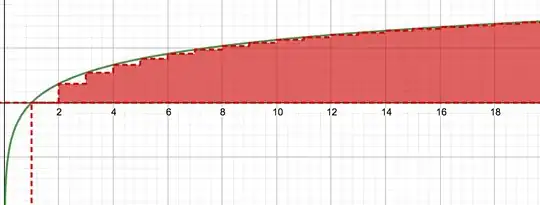So recently a friend asked me to compute this limit:
$$\lim_{n\to \infty }\left(\sqrt[\leftroot{-2}\uproot{2}n+1]{(n+1)!}-\sqrt[\leftroot{-2}\uproot{2}n]{n!}\right)$$
Question : Does the limit exist? If yes is it finite and if yes what is its value?
How do we solve this?
Edit:
Note: I am only familiar with only basics of limit solving(upto L'Hôpital's rule) and have reasons to believe that this limit can be solved using these methods. If you could keep your answer simple that should help.
Update
Here is where I have gotten so far
$$ \lim_{n\to \infty} (n+1)! ^{1\over n+1} - (n)! ^{1\over n}$$ Can be written as $$ \lim_{n\to \infty}[1*2*3*...(n+1)]^{1\over n+1} - [1*2*3*...n] ^{1\over n}$$
$$\implies \lim_{n\to \infty} [(n+1)[{1 \over n+1}* {2 \over n+1} * {3\over n+1}...* {n+1 \over n+1}]^{1 \over n+1} - (n)[{1 \over n}* {2 \over n} * {3\over n}...* {n\over n}]^{1 \over n} ]$$
(Factoring n+1 out of first expression and n from second.)
$$\implies \lim_{n\to \infty} [(n+1) e^{{1 \over n+1} (\sum_{r=1}^{n+1}ln({r\over n+1}))} - (n) e^{{1 \over n} (\sum_{r=1}^{n}ln({r\over n}))} ]$$
From here I think second limit can be solved as a integral(limit of a sum) but I cannot solve first. How can I proceed further?
Thanks!
